Enjoy a wildflower summer
Don’t miss the beautiful wildflowers at our centres this summer.
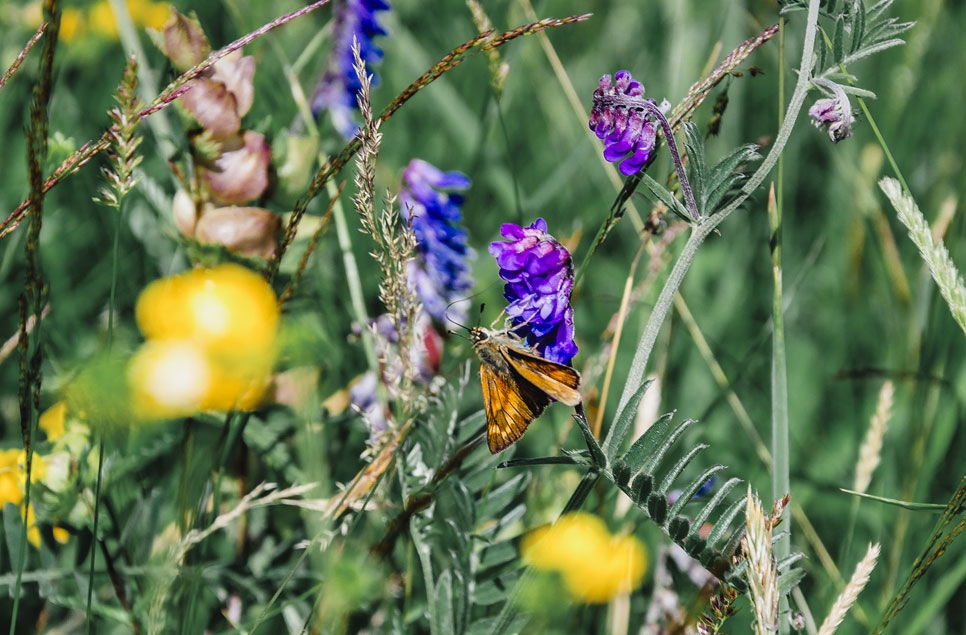
Wildflowers are surely one of the joys of summer in the UK. Whether it’s a sea of swaying oxeye daisies in a vast wildflower meadow, or the cheerful faces of red poppies growing on a city wasteland, they can’t fail to lift the spirits.
Wildflowers provide bees, butterflies and other pollinators with food. Picture a wildflower meadow in the UK, during the summer. It’s bursting with colour, buzzing with insects. Just one acre of that meadow can contain three million flowers, producing enough nectar to support nearly 96,000 honeybees a day. Mind blown?
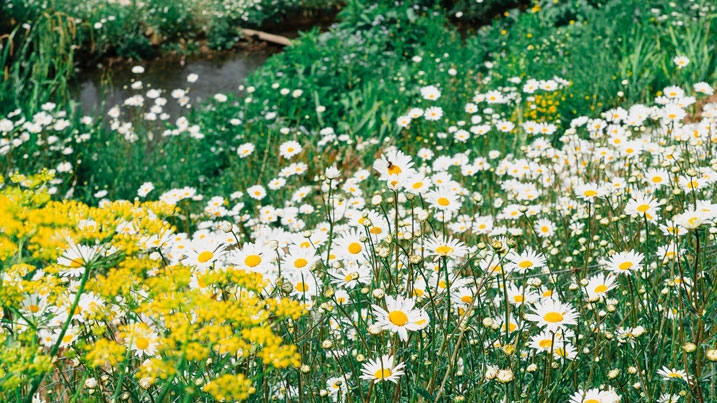
We only notice these incredible eco systems when they’re blooming but wildflowers are still working hard when they’re not in bloom. Their root systems extend deep into the soil, storing water and nutrients while holding on to carbon that would otherwise be released into the air.
Wildflowers grow all around us. You’ll see them on city streets, where they spring from tiny patches of bare soil - the base of a lamp post, cracks in walls, an abandoned recycling box. Seeing them thriving in this way is heartening and offers a valuable lesson - nature finds a way if we just give it a little space.
Over the summer you can enjoy an abundance of wildflowers at all our centres. Here we look at some of our favourites.
Bird’s foot trefoil
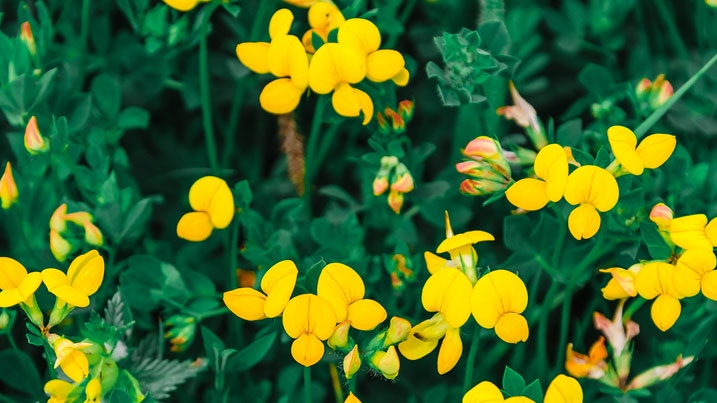
You might know this eye-catching yellow flower as eggs and bacon or granny’s toenails. So named for it claw-like seed pods and sprawling appearance. This creeping plant is widespread and grows in all kinds of grassy places from lawns to wet grasslands.
This nutrient dense plant provides food for 160 different species of insects including the caterpillars of the common blue and clouded yellow butterfly and the burnet moth. You can spot it at WWT London on the Wildside walkway and at WWT Caelaverock on Walk on the Wildside, as well as at many of our other centres. It has a long history of use in traditional medicine and has been used to treat a variety of conditions, including respiratory problems, skin conditions and digestive issues.
Yellow rattle
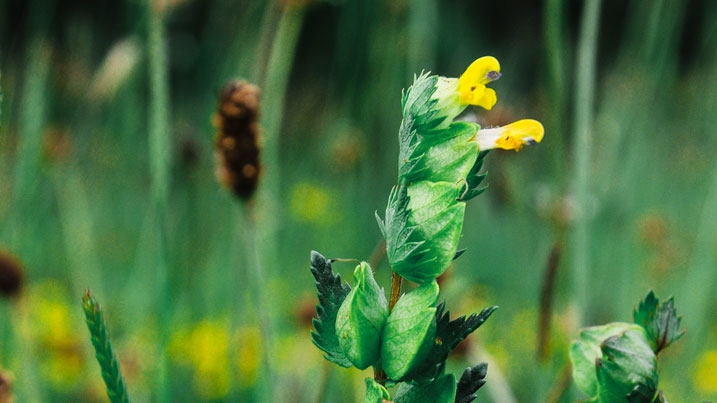
This is a flower you’ll see in most wildflower meadows. Listen carefully to the sounds of the meadow as the flowers die back and the brown pods begin to dry out and you’ll be rewarded with gentle rattling sounds in the breeze. Listen out for it at WWT Washington.
If you’re looking to establish your own wildflower patch yellow rattle is a plant to consider. As its roots develop underground it draws nutrients away from nearby plants, especially targeting grasses. This prevents the grasses from dominating and helps other wildflower species to thrive.
Red clover
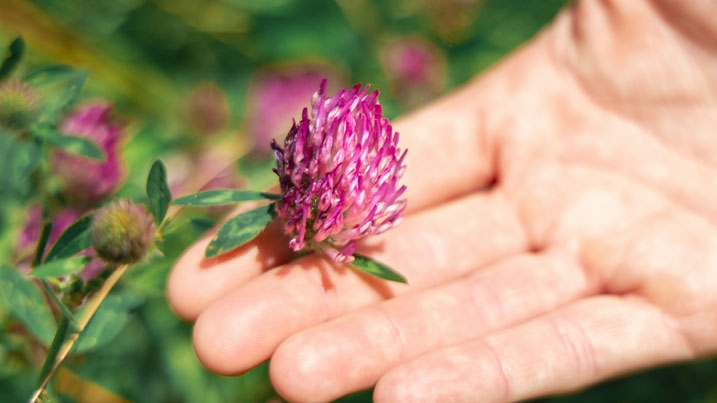
You’ve probably seen this in your garden or local park. Considered a weed, as many of our native wildflowers are, it’s a favourite of many species of bee, including the common carder bee, honeybee and red-tailed bumblebee. It has a deep root system making it drought tolerant. It’s also good for suppressing weeds and improving soil structure.
Red Clover has medicinal properties that are used in the treatment of hot flushes as it contains chemicals that mimic the female sex hormone oestrogen. It also helps in the control of eczema, whooping cough and even nappy creams. Look out for it at WWT Caelaverock as you take a wander along the summer walkway, Walk on the Wildside.
Sea arrowgrass
This aquatic herb grows in estuaries and on saltmarshes. With a taste rather like coriander it’s sometimes known as coriander grass. Spot this out on the reserve at WWT Slimbridge. Some parts of the plant are toxic, so care and knowledge is needed if you plan to eat it.
Milkwort
This low growing, trailing flower can appear in blue, white or pink blooms and flowers from May to September in the UK.
It was prescribed by herbalists in the past to nursing mothers with the expectation that it would increase their milk production. Spot this at WWT Slimbridge. Why not join one of our Wildlife Safaris and learn all about the wild flowers on site from our knowledgeable reserve team.
Tufted vetch
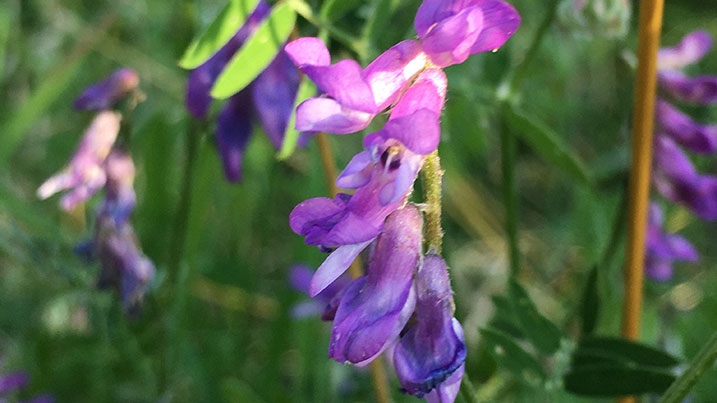
This scrambling perennial has lots of blue flowers, the seed pods turn black when they’re ripe. It’s much-loved by bumble bees, butterflies and moths and is an important food plant for breeding butterflies such as the wood white and short-tailed blue. Keep an eye out for it as you wander along the summer walkway at WWT Caelaverock.
Grass poly
The delicate little flower is only found on wetlands, most particularly areas that flood in the winter and dry out during the summer. It’s most often found in damp pastures where there has been winter disturbance by livestock or birds.
It’s very rare in the UK now, facing extinction and is currently only found at a handful of sites in the UK, one being WWT Slimbridge. Its main threats are field drainage, nutrient enrichment and herbicides.
Orchids
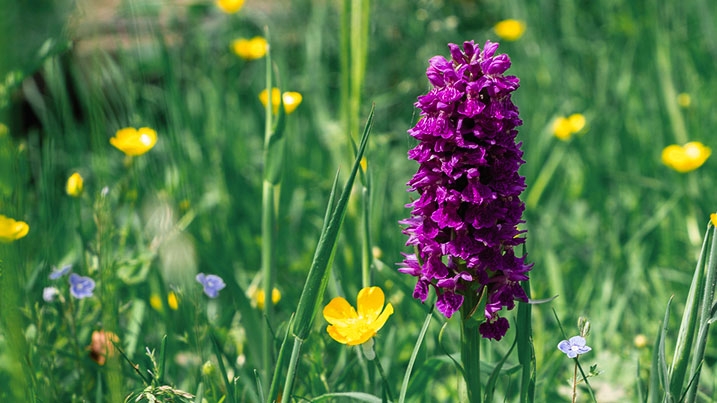
Theses striking flowers are widespread at our sites. Wet habitats are a great place to see the southern marsh orchid, with flowers varying in shade from light pink to dark purple. Look out for it at WWT London. At WWT Washington you can spot the northern marsh orchid (pictured above). In similar habitats, you might also see early marsh orchids and at WWT Castle Espie look out for common spotted orchids.
In drier grassland you might come across the pyramidal orchid, or at WWT Slimbridge you might be lucky enough to spot the green winged orchid which has been found to be growing there this summer. It’s only the second one to be spotted on site. At WWT Washington you might spot the small bee orchid - its velvety lips look like a female bee in a sneaky attempt to attract pollinators.
Wildflower meadows at WWT sites
We manage our wildflower meadows to benefit the wildlife around us, which in turn benefits all of us. It might seem like they’re growing at random, but this is often far from the case.
"Meadows have to be looked after. If we leave them to their own devices, they will become too fertile and end up as rank grass. So we mow the flower meadows in late summer, and take away all the cut material to a compost heap. If we left it where it was to rot into the soil and add nutrients, more aggressive weeds and grasses would soon take over"
Dave Paynter, Reserve Manager at WWT Slimbridge.
At our centres
At WWT Caerlaverock Walk on the Wild Side, which is a path open from May to September, offers visitors a meandering route through the wildflower meadow and out along the Lochar. Species you will come across include yellow rattle, red clover, tufted vetch and bird's foot trefoil. Because of how flower rich the meadow is, it attracts all sorts of insects, particularly butterflies and bees. If you’re a dragonfly nut, this walk is also great because they flit about along the ponds and river here.
At WWT Slimbridge, give yourself a treat and head out on a Wild Safari. These run at weekends in June and then daily during July and August. Let our knowledgeable team point out the abundance of wildflowers on site. From wetland plants like sea arrowgrass, milkwort and grass-poly to an abundance of orchids like common spotted, pyramidal, bee, southern marsh, common twayblade and green king orchids.
At WWT London head to the Wildside walkway and keep an eye out for an abundance of wildflower species. From drier grassland communities to wetter, marshy communities, you'll encounter a multitude of wildflower species such as bird’s foot trefoil, ragged robin, hemlock water-dropwort, sweet flag, purple loosestrife, flowering rush, pond sedge, meadow rue, meadowsweet, southern marsh orchid and many more.
At WWT Arundel the Waterside Walk seasonal path is open from June to the end of September 30 – stroll or sit, surrounded by seasonal wildflowers. The Long Path is a riot of colours in summer with purple loosestrife, hemp agrimony, willow herb, valerian, tansy and various vetches blooming. This path leads to the Wetland Secrets plant house with displays of the traditional uses of wetland plants and IDs of the current crop that’s blooming, month to month.
At WWT Washington join one of our wild walks and you’ll see an abundance of plants including yellow flag iris, bird’s foot trefoil, purple loosestrife, yellow rattle, oxglove, red campion plus many others. Our expert staff will be able to answer all your questions. It’s a great chance for wildlife photographers to capture some close ups.
Get closer to the wonders of nature.
Find your wow


